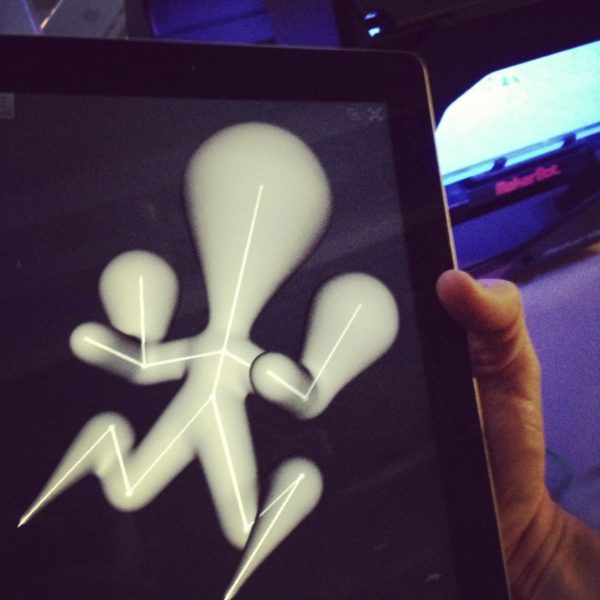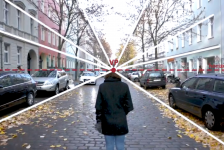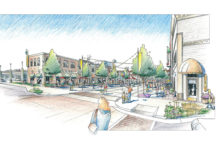In Part One of this series we covered the surface of what big data is and its role in our daily lives. Part Two will start to look more closely at big data and its plethora of applications, most notably in the world of design. The above image is a design being printed on a 3D printer at Autodesk Gallery Design Night. An example of the design process becoming increasingly digital.
What do the cash register at the local grocery store, your friendly ATM machine, and your smart phone have in common, besides being electronic (and nonexistent as little as 20 years ago)? They are collectors of big data–and they usually do it without you even knowing. This data increasingly benefits the process of design.
Design, from product design to landscape architecture, is quickly becoming a digital experience as feedback is more and more often provided instantly. As we continue to rely on technology in the design process, it goes hand-in-hand with big data. Most if not all of the information that is considered big data comes from a digital source. An example would be software programs that use information to help designers better understand their environment in real-time, while another is your cellphone being used as a moving sensor. Known as crowd-sourcing, companies can tap into your mobile sensor, and provide information like traffic times and geographical information. Big data is helping us to design better products, places, and cities that function more efficiently.
This discussion about big data and design wouldn’t be complete without a mention of social networking sites. The ability to disseminate information to people all over the world has become so simple. Spotify, Pandora, Netlix, Facebook, Twitter, Flickr, Instagram, and other sites have become the bread winners in the realm of big data. Within each coded tweet, status update, and image posted, data is being crunched to help better solve human and environmental problems. This is where design can flourish.
Enter geographic information systems (GIS) and geodesign. The latter was a topic of discussion recently here on Land8. Check out 2 Books on Geodesign to read more. Of course the very ideas of Geodesign and GIS have a landscape architectural legacy. Ian McHarg, as early as 1964, envisioned that computers would one day manage his data overlays with great efficiency.
Overlays of information used in GeoDesign (Photo Credit: ESRI)
GIS is not itself “big data,” but it can use all this information being collected by phones and cardswipes and put it to work. Case studies conducted by GIS industry behemoth ESRI show that access to environmental and scientific data is more important than ever. This information allows us to make more critical decisions during the design process. A stable foundation of geographic and scientific information, says ESRI, “extends our analytical capabilities to automate the calculation of hazards, risk, sensitivity, capacity, proximity, accessibility, and other factors to inform design decisions.” Bringing technology, science, and analysis of statistical information into the design process has been a revelation, and all without compromising the art of design. GIS and big data together are helping to build and develop stronger designs.
A city that has implemented big data is Santander, in northern Spain. A program known as SmartSantander has major tech companies salivating. The city has placed some 12,000 hidden sensors across the city that measure everything from air pollution to locations of free parking spaces. Sensors monitor the city like a giant smart-home, and can let Santander personnel know which dumpsters are full, or can automatically dim street lights when no one is around. With information like this available, design of not only a city, but design of products on a human scale can evolve more quickly to better reflect the needs of people.
An aerial of Santander showing points of concern brought about by sensors (Photo Credit: NPR)
Design can’t occur without feedback from the user. So in closing, how can design research improve so the built environment and products of industrial design continue to improve? Its a question that may not have an answer at this time, but will be provided as time passes and new technologies and ideologies are developed. Over time, big data and design research can deepen our understanding of human behavior, interaction and preferences, bettering our designs and our ability to understand and predict their impact.
Next month Part Three will show the relationship of how big data is being implemented in the multi-faceted profession of landscape architecture. As always, let us know what you think. Leave a comment below…
Sources
Photo Credit: Livealoud
Published in Blog











